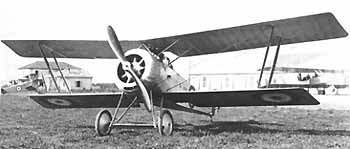|



Designed by Pierre Dupont, the Hanriot HD.1 biplane was small but
agile. It was rejected by the French Air Service in late 1916 but found
favour with the air services of Belgium and Italy, becoming the
standard Italian fighter during World War I. Though not as fast as the
Albatros scouts or the Hansa-Brandenburg D.I, it was sturdy, reliable
and very manoeuvrable. Entering service during the summer of 1917, the
HD.1 proved its worth throughout the war. On 26 December 1917, Italian
pilots equipped with the Hanriot HD.1 engaged and destroyed eleven
German reconnaissance aircraft at Istrana without incurring a single
loss. Willy Coppens, Belgium's consummate balloon buster, scored most
of his victories flying this aircraft.
Country: France
Manufacturer: Société Anonyme des Appareils d'Aviation Hanriot
Type: Fighter
First Introduced: 1916
Number Built: 831
Engine(s): Le Rhône 9JB, 9 cylinder, air cooled rotary, 120 hp
Wing Span: 28 ft 6½ in [8.7 m]
Length: 19 ft 2¼ in [5.85 m]
Height: 9 ft 7¾ in [2.94 m]
Empty Weight: [385 kg]
Gross Weight: 1,334 lb [605 kg]
Max Speed: 115 mph [184 km/h]
Ceiling: 20,670 ft [6,000 m]
Endurance: 2½ hours
Crew: 1 |
